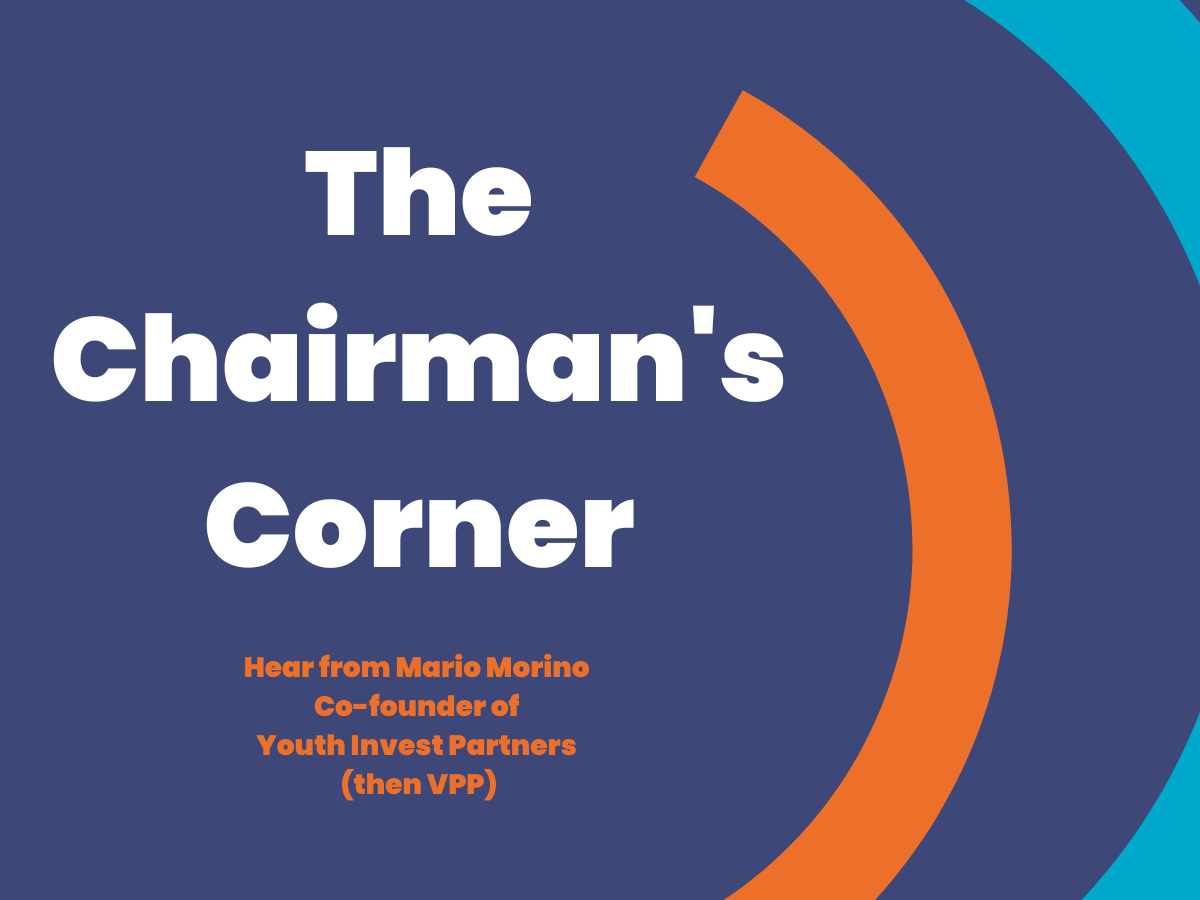Chairman’s Corner: December 2006

The Private Equity Investing Model: Helping Leaders Build Great Nonprofit Institutions
by Mario Morino, Co-founder of VPP
Editor’s Note: This month’s Chairman’s Corner is an excerpt of remarks Mario Morino made at a Slate 60 panel he was part of on November 13, 2006, at the William J. Clinton Presidential Library, in Little Rock, AR.
In the early 1990s, I retired from business and became deeply involved in philanthropy. Initially, we considered various forms of social investing and “capacity building,” which were then popular emerging trends. But after some initial experimentation and practical application, it dawned on me that what was really needed in the nonprofit and philanthropic sectors was an approach that I had lived for years in the private sector—that of growing my business in partnership with General Atlantic, LLC, a premier global private-equity investment firm.
I also concluded that the financing system for a class of nonprofits seeking to scale their impact was dysfunctional. And I asked myself how could we adapt the approach that General Atlantic used to help build successful companies to helping nonprofits in the area of social services build high-performing organizations to scale their impact for children and families.
When General Atlantic invested in my firm, they not only provided growth capital, but more importantly they provided “strategic assistance.” Taking a long-term view, the firm wanted to help the CEOs in which they invested build great businesses, rather than replace them. They invested in leadership and great people as opposed to just products and markets, and preferred to influence you rather than control you. They pushed to recruit the best talent, and helped bring them onboard and keep them. They gave me advice and opened doors that allowed me to think differently, bigger and bolder. They often pushed me past my comfort zone, without breaking me or my firm. And, they helped me grow as an executive.
Today, in our work with Venture Philanthropy Partners, we seek to mirror that approach. VPP is a six-year-old philanthropic investment organization that has committed $29M in growth capital to 12 nonprofit organizations in the National Capital Region. These organizations are growing stronger and more effective, serving tens of thousands of children better, and raising their expectations of themselves and of what is possible. In addition, they are leveraging—by a factor of two—our investment for new capital for themselves and the region.
We bring a rigor, discipline, and execution capacity to the investment process. Of course, all good investments start with the organization and people. But the real work begins after we commit the capital, working closely as a trusted advisor with each of our partners, providing advice, access to networks of people, expertise, and capital.
We have learned some important lessons about blending the private equity investment approach with the earned understanding of how nonprofits, public funders, and foundations function and exist in their communities. These include:
- “Place” is important. Just as “all politics is local,” we found that the most effective nonprofit investing is local so we focus our investments in the National Capital Region.
- Investment organizations like ours need seasoned full-time executives having operational experience, who have been there, done that, understand the playing field—politically and socially—and who grasp the important cultural nuances in this space, whether around race, class, turf, or ethnicity.
- Leadership is even more important than we envisioned.
- There was much to learn from those who went before us. The lessons and knowledge from these individuals and organizations make it possible for us to learn and adapt our model for effective philanthropic investing.
- The ecosystem and resources for nonprofit leaders seeking to scale their organizations are at best frail, in many cases nonexistent, or, worse yet, populated by too many providers who are almost certain to be ineffective. As a result, expectations for what is possible are low.
- And, finally, our work has to advance innovative public policy and leverage public funding, not replace it.
The lessons we have learned over the past six years have given us insights that have the potential to influence how the allocation and use of philanthropic and public funding could be improved for greater social impact and return.



